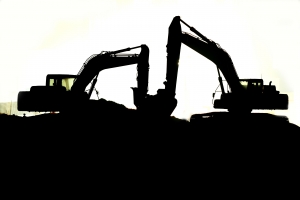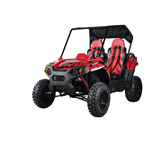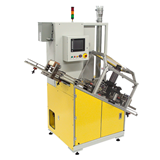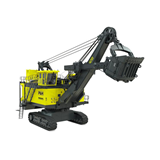The delegation is visiting Chile and Brazil, where University of Sydney is already engaged in cooperative research in a wide range of areas including photonics, plant breeding and transport management.
Joint research projects are also being developed in robotics engineering, on the back of the mining boom and the wealth of natural resources in both regions.
Eduardo Nebot, Director of the Australian Centre for Field Robotics (ACFR) and a member of the University delegation, said while the resources boom had provided a huge boost to the Australian economy, it had also placed significant pressure on the mining industry to expand to meet the resource requirements of emerging economies.
"The industry's challenge is to increase productivity and efficiency while maintaining safety standards and ensuring that its lucrative job opportunities remain attractive career options," Professor Nebot said.
He said current research and development in field robotics involves the development of automated robotic systems for tasks that are unsafe, inefficient, difficult or unpleasant for people to carry out.
"It has the potential to vastly improve productivity, efficiency and safety in a wide range of contexts, including the mining industry," he said.
Based in the School of Aerospace, Mechanical and Mechatronic Engineering, ACFR was established in 1997 to tackle field robotics applications in outdoor industrial environments. Since then it has successfully introduced robotics systems to cargo handling, stevedoring, autonomous underwater vehicles, aerospace and defence.
But mining in particular has attracted a large number of researchers looking to develop systems with enhanced perception, learning, automation and control.
"Every year hundreds of mining accidents around the world result in deaths and injuries, as well as the significant financial costs of lost work time, machine downtime and equipment repair. The majority of these accidents occur as a result of a human operator failing to comprehend the risk involved when operating a machine," Professor Nebot said.
"The mining process generally involves the excavation, loading, transportation and dumping of large amounts of waste and ore, and there are inherent risks associated with operating a vehicle in such an environment.
"Operators work long shifts, the environment can be very difficult and the view from the driver's cabin can be very restricted. Furthermore, these interactions are inherently difficult due to the size of the machines, and they can be further complicated by environmental conditions such as dust, fog and snow.
"This complex task requires the system to be able to understand the state of the world the vehicle is operating in, sense its current environment and situation, predict future movements of the vehicle and any others operating nearby, estimate any risks involved, and use radio communication to broadcast the information."
Another area of ACFR research that will directly benefit the mining industry is human-machine interfaces. Operators of large machines can become overloaded with information from the vast array of different reporting and monitoring systems that are present in mining vehicles, according to Professor Nebot.
The ACFR is exploring a combination of sound, graphics, voice and tactile interfaces to address the problem. Although the primary focus is on the mining industry, they could also be applied to the wider area of intelligent transportation systems.
Passenger vehicles, for example, are already beginning to incorporate sophisticated sensing techniques to detect risks and minimise collisions.
Professor Nebot predicts that within the next few years, we can expect a large number of commercial vehicles to be retrofitted with sophisticated sensing, human-machine interfaces and vehicle-to-vehicle and vehicle-to-infrastructure communication.
"The ACFR has already taken an active role in this area that will have a significant impact on the way we will interact withvehicles and traffic in the future," he said.



-160x160-state_article-rel-cat.png)

















